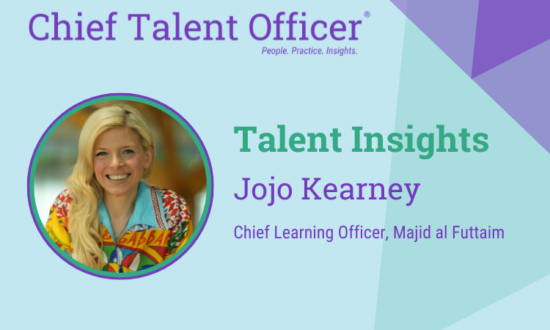Another development less noticed, perhaps because it is so obvious, may exhibit the same potential to be elevated to the pantheon of new perceptions. It has to do with the increasing multiple, external and rich relationships learning and training basics are beginning to manifest. What is curious is that the content remains fundamentally intact. The focus is on the connections. The busy part is in the externals—in the constellation that surrounds the star subject matter. The extensions function like booster rockets propelling the training to new places or orbits. It appears to be thus more a matter of learning extensions than of learning creations.
The net result is that training may have to be perceived less as separate and discrete units and more as a series of hubs that radiate outwardly in search of other hubs. That in turn argues for a more expansive and inclusive version of the learning management system (LMS). Indeed, because such connective extent applies across the board to all subject areas (evaluation, leadership, ROI, strategic planning, etc.), it may serve to establish a new agenda for LMSs altogether.
Although the constellation of connections radiates outwardly in a number of directions, they generally fall into three basic categories:
- Competency-enhanced increments: E-learning (electronic delivery), o/s-learning (organization and self-management), a-learning (assessment feedback) and d/r learning (differentiation rubrics).
- Progressively holistic linkages: L-learning (linkages), i-learning (interfaces) and c-learning (convergence).
- Innovative alliances: I/a-learning (imagination and art) and f-learning (futuristic).
The menu or checklist of options serves a double function: to review and evaluate the current in-house staples of the LMS and to consider extending and amplifying existing training with one, many or all of the additives. Although the process may ultimately involve altering or enriching the content, at least initially, action should be limited to establishing external connections. The other recommendation is to consider using all as an overlay, no matter how gradual or sequenced. Without adding to the list of training, the menu of the LMS would thus be enriched by a progressive and multiple series of increments. Hopefully, such additives individually and collectively also would vivify basics, turn catching-up into getting ahead, transform mission into vision and cumulatively suggest a whole that may be greater than the sum of its parts. It would impart to all training the unfinished quality of lifelong learning.
Competency-Enhanced Increments
Increasingly, learning is e-learning. Even academic subjects are acquiring the delivery prefix. Thus, English comp is now e-English comp, economics, e-economics. But when e is prefixed to training or an academic course, it is really a double e. In other words, it offers a double delivery: the delivery of the training itself and the delivery of the Internet resources of that training. The workshop has been delivered not only to the workplace, but also to the home, office or hotel of the employee or student. Moreover, it also has delivered the employee or student into the cyberspace of an enhancing and extending cyber-library. Indeed, this nicely sets up and segues into the next dimension.
If well designed, the larger target is s/o-learning, or self-management of training. Specifically, the trainee is encouraged not only to apply the learning to his special set of differences and perceptions, but also in the process to strengthen his skills of managing his now-altered identity.
The s/o additive pushes self-reliance to the point where training is shared and shouldered increasingly by each trainee. Ideally, each trainee’s self-organizing ability results in the initiative of being a self-starter.
Much of the distinction of LMSs and CLOs is the high value they have placed on measuring training effectiveness. But that same relentless focus has to be built into training itself. It must become compulsively and habitually ruled by constant feedback of assessment. For the connection between doing and reviewing to take hold, reviewing has to become part of doing. In its effect, the extension of a-learning is capable of not only producing productivity correctives, but also bringing about culture change.
Difficult, sometimes impossible, training has to be designed so that it is universally adjusted or responsive to all. Differentiation thus remains the goal. But if the variety of personnel can never be totally or adequately addressed, perhaps the range should be shifted to the job itself and to the variety of performance levels. All differentiation would then take the form of performance rubrics—a matrix system of disaggregated work functions adjusted minimally to three familiar performance levels: does not meet, meets and exceeds. The rubric not only accommodates differentiation, but also promotes self-selected benchmarking. That in turn provides the basis for job performance improvement.
It is notable that all of these versions of learning extension are incremental. Their modest goal is quantitative change. Their strength is to encourage the internalizing of new habits of thinking about work that make the process less mechanical and more reflective, less dependent and more autonomous, less dispersed and more focused, less generalized and more rubric-driven. The next level is more ambitious.
Progressive Holistic Linkages
If the first set of extensions focuses on the individual, her job and her self-management of both, here the emphasis is on the interpersonal and the inter-structural. A number of years ago, the CEO of Motorola discovered that there were more productivity gains to be realized between rather than within divisions. Thus, crossovers of various kinds characterize the three dimensions of l-learning, i-learning and c-learning.
Training propelled by linkages, or l-learning, is interpersonal and interdivisional. But the connections sought should always be close by, daily and familiar. Sometimes linkages bring to the surface hidden resentments toward individuals who do not carry their weight and to units that are not explicitly income-generating. Far from being ignored, they are factored into linkages. Specifically, on an interpersonal level, receiving satisfaction must be accompanied by giving satisfaction. A relationship is a not a one-way street. Similarly, divisions have to be understood as interdependent on one another. Co-workers and divisions proximate to each other have to be redefined in terms of their relationships of mutual reliance. For that to occur, turnaround is required. Employees and units have to face outward toward each other, not just inward.
Interface is a more ambitious version of linkage. Still basically internal, it seeks to engage difference and even opposites, usually at a distance. The range is now the entire organization and its organizational chart and far-flung parts. It involves stretch, even strain. Its basic metaphors are the big picture, the orchestra and sports teams. The goal of interfacing is to impart equality to all parts and to define the whole as coherently diverse. Its key yield is alignment and recognition of a common and shared purpose. It accomplishes in practical and structural ways what all the speeches and exhortations of the CEO are all about.
Convergence is an unpredictable macro version of linkage and interfacing. It comes out of left field. It is the sudden emergence of a development in a field far removed from the industries and companies it may affect. It is thus far-fetched in the truest sense of the word. It is never in the cards except as wild cards like the joker. Convergence operates on the one-plus-one-equals-three principle: the unexpected fusion and yields of sociology and biology, the unifying of human and machine intelligence, the partnership between ecology and nanotechnology. Almost always outside the range of vision of the industries impacted, it is always sudden. Its value as a connective of training is that it opens employees and companies to surprise. It prepares for breakthroughs, the convergence of discovery, brave new worlds and revolutions.
Innovation Alliances
I/a-learning seeks to invest the imagination with greater importance. In many ways the product of brain research, imagination training is offered not as the enemy but the ally of analysis. Imagination is presented as a separate intelligence and art as its methodology. Simulation and scenario become the staples of i/a-learning. The alliance of intellect and creativity expresses itself in case studies that offer a world in miniature that invites innovative re-creation.
The ultimate blend of simulation and case study is science fiction, which it turns out has a better forecasting average than strategic planning. The value of i/a-learning is enhanced when coupled with f-learning—looking and imagining ahead. Actually, innovation does not merely anticipate the future—it creates it. What is ahead is brought into this world ahead of schedule. An alliance with the future and all its forms thus helps not only to produce innovation, but also to shape a futures-directed or -driven workforce. Indeed, innovation and the future are a convergent force.
Conclusion
Hopefully, this analysis of the various additives has documented the existence as well as the availability of a rich network of extensions and connections implicit in all training. But acknowledging such additives is a crucial threshold to establish before trying to integrate the LMS and the LCMS. According to Brandon Hall’s comparative analysis of both systems, 81 percent intelligently put the two together. To be sure, that does not ensure integration or interoperability. Thus, although all of the LMSs reviewed claim total compatibility with third-party packages, only 54 percent actually performed the necessary tests of inoperability with industry-leading products.
The argument here is that if such testing has been done, it may have to be done again. And the 46 percent who have not done it in the first place now have a more comprehensive option. Three steps are involved. First, the richer extensions and enhancements of e-learning have to be factored into existing LCMSs. Second, LCMSs not only have to develop minimally additional evaluation linkages, but also different and more reverberating evaluative bridges. Third, the now expanded, more complex and differentiated whole must be tested for interoperability. Finally, never assume finality. Rather, perceive the entire effort as a work in progress or one that is progressively holistic.
Happily, tapping some or all requires neither substantial revision of existing training nor the creation of new workshops. All the additives seek to supplement, extend and link basics to other dimensions. Some involve an admittedly ambitious stretch and perhaps should be limited to select groups. But all operate as plus-factors. They are not just add-ons, but add-ups. In the process, they may serve to reinvigorate some excessively familiar and tired training with new life. They may create more coherent organizations and interdependent relationships. They may stir more creative and even innovative ways of organizing work and work relationships. For LMSs and CLOs, their value may reside not so much in adding more arrows to their quiver, but in their ability to travel further and to hit the bull’s-eye of far-away targets too important and too contributory to ignore. Finding the connections and integrating them with existing training combines renewal and reconfiguration, analysis and imagination, present survival and future growth.
Irving H. Buchen is vice president of academic affairs at Aspen University. He can be reached at ibuchen@clomedia.com.














